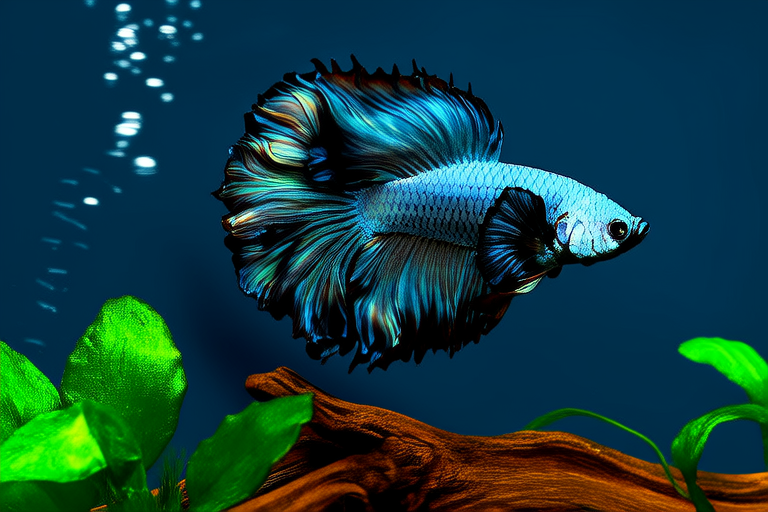Betta Fish Behavior: What Their Actions Really Mean
Welcome to this comprehensive guide on understanding your betta fish’s behavior. As a popular choice among aquarists, bettas exhibit a range of fascinating actions that can provide valuable insights into their health and well-being. This article will delve into common behaviors such as fin flaring, darting, and resting positions, analyzing the reasons behind these actions and linking them to the betta fish’s natural environment and instincts. We’ll also offer tips for owners to interpret these behaviors for better care.
Understanding Betta Fish Behavior
Betta fish, also known as Siamese fighting fish, have been a subject of fascination for aquarists for decades. Their vibrant colors and unique personalities make them a joy to watch. However, to truly appreciate these creatures, it’s essential to understand their behaviors. From aggressive displays to peaceful rest periods, each action has a purpose rooted in the betta’s evolutionary history.
Fin Flaring: A Display of Dominance or Territoriality
One of the most striking behaviors exhibited by betta fish is fin flaring. When a betta flares its fins, it expands them dramatically, making itself appear larger. This behavior is often seen when the fish feels threatened or is establishing dominance within its territory.
Scientifically speaking, fin flaring is a form of communication that bettas use to signal their presence to potential rivals. In the wild, bettas inhabit densely vegetated areas where visibility can be limited. By flaring their fins, they increase their visual impact, which serves as a warning to other males. This behavior is particularly pronounced during mating season, where males compete for female attention.
For owners, recognizing fin flaring is crucial. If you notice your betta frequently flaring at objects or other fish, it could indicate stress or discomfort. Providing ample hiding spots and ensuring your tank setup mimics the betta’s natural habitat can help reduce unnecessary stress. Additionally, avoid keeping multiple male bettas together, as this can lead to aggressive confrontations.
Darting: An Expression of Alertness and Curiosity
Darting is another common behavior observed in betta fish. These quick movements involve sudden changes in direction, often accompanied by rapid acceleration. While darting can seem erratic, it typically reflects the fish’s alertness and curiosity.
In their natural habitat, bettas need to be vigilant against predators and opportunistic feeders. Darting helps them evade threats and locate food sources efficiently. In captivity, darting might occur if the fish perceives movement outside the tank or if it’s exploring its surroundings.
Owners should view darting as a sign of a healthy, active betta. However, excessive darting could indicate stress or discomfort. Ensure the water quality remains optimal and consider adding floating plants or decorations to provide more hiding spaces. These additions can help the betta feel secure and less likely to dart unnecessarily.
Resting Positions: Indicators of Comfort and Health
Betta fish spend significant time in various resting positions, each offering clues about their state of health and comfort. Common resting positions include lying at the bottom of the tank, floating near the surface, or hovering mid-water.
Lying at the bottom of the tank is often a sign of stress or illness. If your betta frequently rests at the bottom, it might indicate poor water conditions, insufficient oxygen levels, or underlying health issues. Conversely, floating near the surface can signify buoyancy problems, potentially due to swim bladder disorders. Hovering mid-water is generally a healthy position, suggesting the betta is comfortable with its environment.
To ensure your betta maintains healthy resting habits, maintain regular water changes and monitor temperature fluctuations. Keeping the water temperature stable between 76°F and 82°F (24°C and 28°C) can prevent stress-induced behaviors. Additionally, providing a varied diet rich in nutrients can support overall health.
Interpreting Behaviors for Better Care
Understanding your betta’s behaviors is key to providing optimal care. Here are some tips for interpreting these actions:
- Watch for Patterns: Notice any recurring behaviors and correlate them with specific events or environmental changes. For instance, does your betta flare more after feeding? Does it dart when you approach the tank?
- Monitor Water Quality: Poor water quality can trigger stress responses in bettas. Regular testing and maintenance can prevent many behavioral issues.
- Provide Hiding Spots: Bettas benefit from having places to hide, especially if they feel threatened. Floating plants or caves can offer refuge and reduce anxiety.
- Observe Feeding Habits: Healthy bettas will show interest in food and eat regularly. If your betta loses appetite or shows signs of overeating, it may indicate stress or health problems.
Conclusion
Understanding betta fish behavior enriches the bond between owner and pet. By recognizing and responding to their actions, you can create a nurturing environment that supports their physical and emotional needs. Remember, each betta is unique, and what applies to one may not apply to another. Always observe your fish closely and adapt care strategies accordingly.
With patience and knowledge, you can ensure your betta leads a happy, healthy life. Enjoy the journey of learning and bonding with these captivating creatures!
